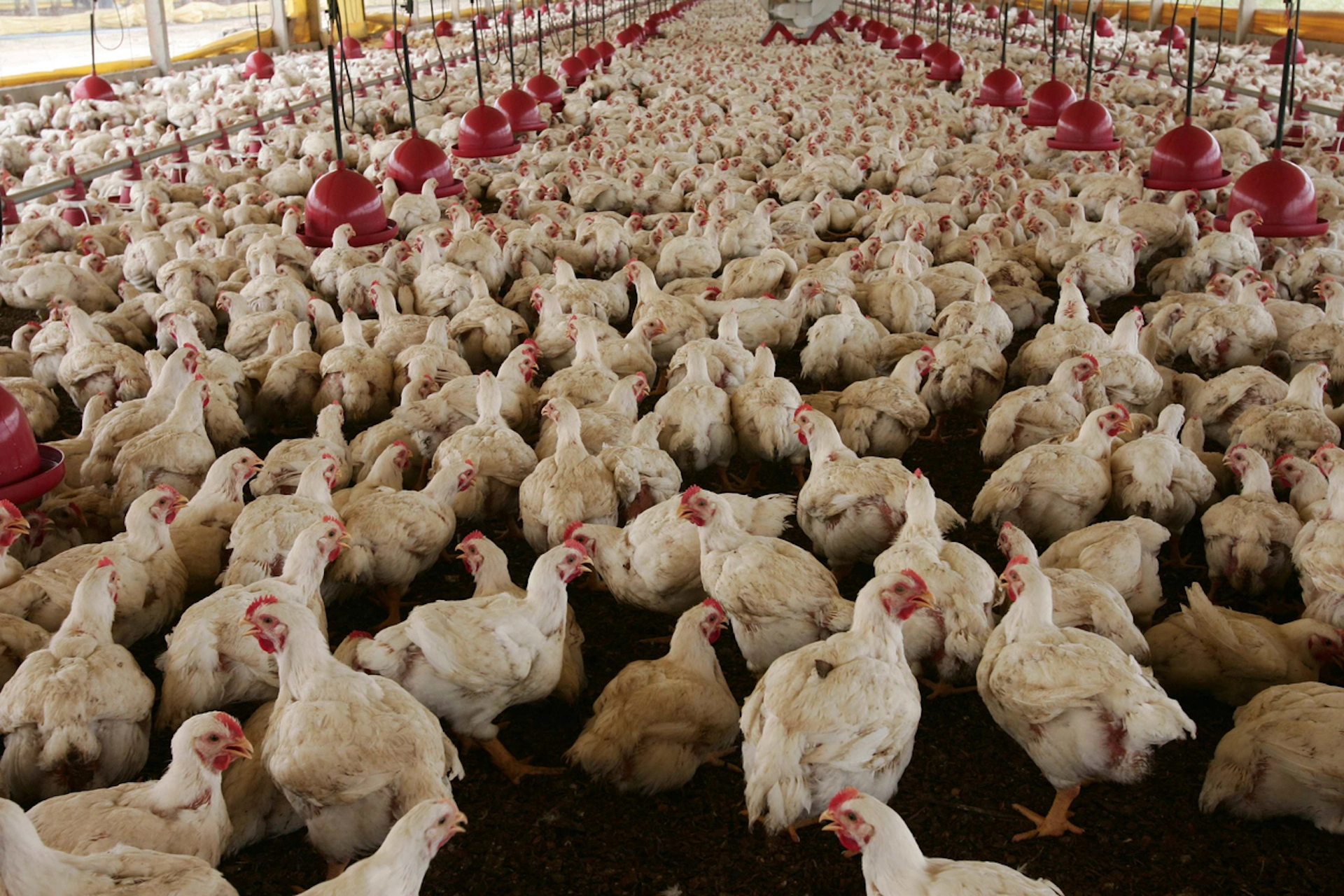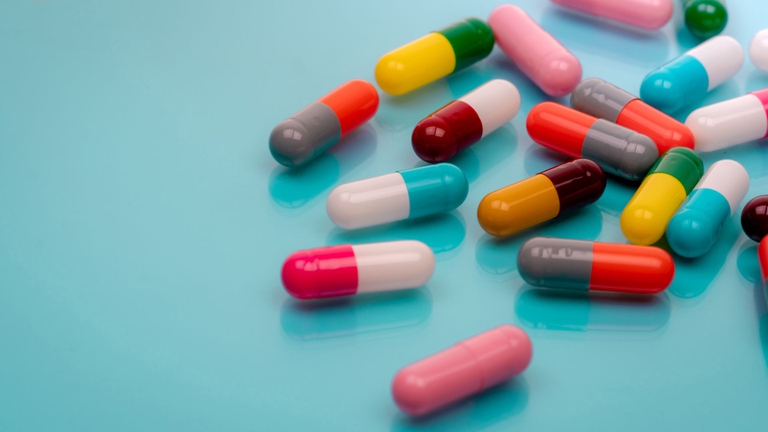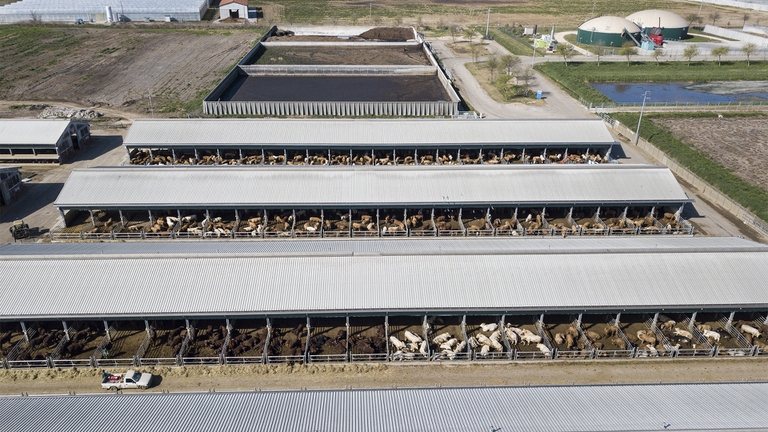https://www.lifegate.it/proposta-legge-contro-allevamenti-intensivi
- |
- Intensive farming is an unsustainable production system from the point of view of animal welfare and human and environmental health.
- With current meat consumption, every Italian emits twice as much CO2e as they would with the Mediterranean diet in its original version, with limited meat consumption.
- Some environmental associations have presented a bill to stop the expansion of intensive farming and create food systems that benefit animals, consumers and small farmers.
A bill to change them intensive farming:it was presented last February 22nd, in a press conference at the Chamber of Deputies, by Greenpeace, WWF Italia, Isde - Doctors for the Environment, Lipu, Terra!.In support of the initiative, among others, the deputies Michela Vittoria Brambilla (We Moderates), Eleonora Evi (Alleanza Verdi Sinistra), Carmen Di Lauro (5 Star Movement), Andrea Orlando (Democratic Party) and the local G.A.E.T.A. Committee spoke in support of the initiative.of Schivenoglia (MN).

Stop intensive farming:the objectives of the proposed law
The objective of proposal is to change the production system of intensive farming which, as underlined by the speakers, damages the Health, The animal welfare, theenvironment and the small companies.The requests of the environmental associations are:
- stop the expansion of intensive farming, especially in the most polluted areas
- reduce the number of animals raised in Italy
- start an ecological transition of existing intensive farming
- support small farms
- protect the rights of workers in the sector
- ensure healthy, quality food at affordable prices for consumers
Climate change and pollution:the effects of emissions from intensive farming
Intensive farming is one of the main causes of climate changes as they are responsible for 16.5 percent from the global emissions of greenhouse gases (a figure comparable to the effects of the entire transport sector) and the 60 percent of emissions from the entire agri-food sector.It's about methane mainly, but also ammonia:in Italy, in particular, the livestock system is currently responsible for over two thirds of ammonia emissions, the second cause of the formation of fine dust (PM2.5), responsible for thousands of premature deaths every year in our country.This is especially true in Po Valley where there is a high concentration of intensive farming.
The exploitation of resources and the threat to biodiversity
Sewage from farms also contaminates water and soil threatening the biodiversity.Not just pollution:according to WWF data, intensive farming consumes up to 10 percent of the planet's fresh water and until 30 percent of the land not covered by ice.Then there is the question deforestation:60 percent of rainforests (in the Amazon this percentage reaches 70 percent) are cut down to obtain pastures and to grow large quantities of vegetables (especially soy and cereals) intended for animal feed.
In the European Union, two thirds of the cereals marketed become feed and around 70 percent of European agricultural land is used for animal feed, mainly for crops such as corn which requires a lot of water. The consequences do not only concern the loss of habitats and wild species, but also the greenhouse effect responsible for the global warming.
The consequences on human health and animal welfare
Regarding animal welfare, Intensive farming is one of the food production systems characterized by overcrowded spaces, with artificial light or in the dark and without any possibility for the animals to implement natural behaviors.Animals are often mistreated and do not receive healthcare or are abused antibiotics.
This is also where the problem ofantibiotic resistance of our organism which the WHO recently defined as "a global health emergency", confirmed by the statistics which reveal that in Europe over 10 thousand deaths occur per year due to resistance to antibiotics, a third of which occur in Italy.

From the point of view ofnutritional efficiency, although 77 percent of the world's agricultural land is dedicated to livestock, these generate only 18 percent of the calories and 37 percent of the proteins total consumed by the world population.
A system that penalizes small companies
As Greenpeace reports, the80 percent of European funds for Italian agriculture currently ends up in the coffers of just 20 percent of agricultural companies.This system, in fact, penalizes small companies and favors larger ones:according to Eurostat, in just over ten years (between 2004 and 2016) Italy has lost over 320 thousand companies, witnessed a 38 percent decline in smaller companies, a 23 percent increase in larger and 21 percent of very large ones.The environmental associations therefore ask a model with fairer profit margins for producers and more accessible prices for consumers.
The benefits of reducing meat consumption
Over the last sixty years, the meat consumption world has almost tripled passing through 25 to 80 kg per year each. In Europe, more than 80 percent of meat comes from intensive farming, in Italy even 85 percent of chickens and over 95 percent of pigs are raised intensively, and almost all dairy cows do not have access to pasture free.

Until March 2nd, on its social channels, the WWF offers the Meat free week:a week without meat to concretely reduce the environmental impact. In fact, every Italian emits up to 4.5 kg of CO2e with meat consumption alone, almost double what was predicted by the Mediterranean diet which instead generates only 2.3 kg of CO2e per capita, but which is followed in its original version with a reduced presence of meat, by only 13 percent of Italians.
Consumers would like more transparent labels on intensive farming
From ainvestigation carried out by Altroconsumo together with Beuc and Icrt (bodies that bring together various consumer organizations in Europe and around the world) to find out consumers' opinions on the welfare of farm animals, it emerges that the topic is very important for the 41 percent of Italians and that 3 out of 4 respondents would be willing to pay a premium for food produced to higher animal welfare standards.Furthermore, the majority of those interviewed (88 percent) would like to find alabel similar to the one currently in use for egg which indicates the breeding method.
